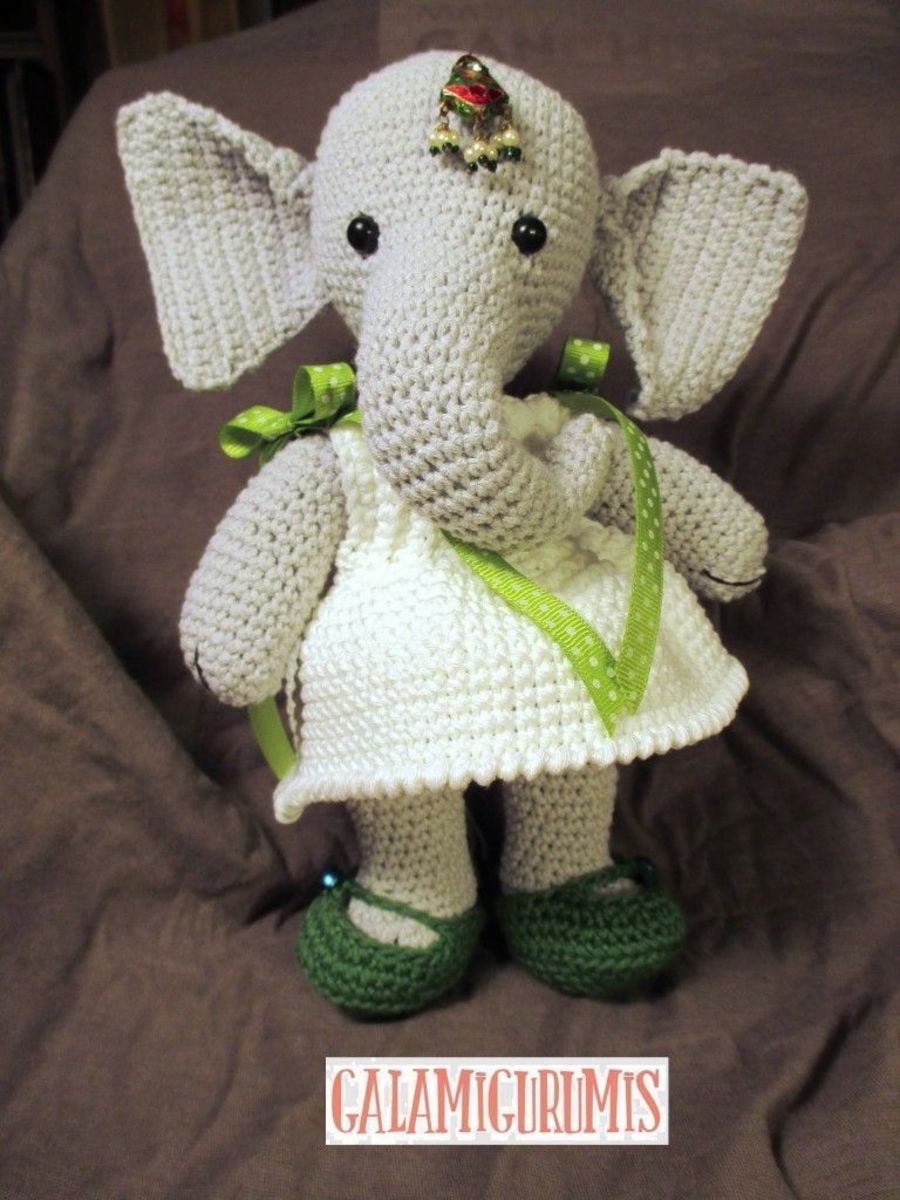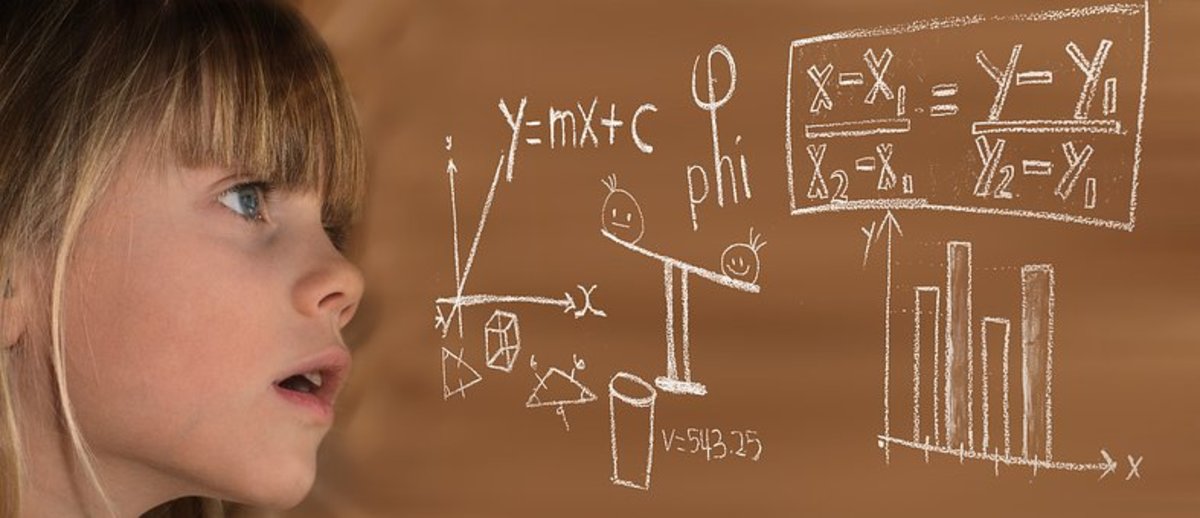FIND THE Nth TERM USING "POWER" AND "FRACTIONS"
In this hub I intend to establish the relationship between "powers" and fractions in the nth term of a sequence.
Complete the tables below given that the nth term is:
(i) We will complete the following table where nth term is 2n (2 to the power of "n")
This can be written as un = 2n
So lets start to substitute
n 1 2 3 4 5
un 2 4 8 16 32
↔ ↔ ↔ ↔ (Do you see a pattern)
2 4 8 16 (The number is being doubled each time, this suggests that the rule involves 2 to the power of something.)
un = 2n
When "n" is 1... 21(2 to the power of 1) = 2
when "n" is 2... 22(2 to the power of 2) = 4
when "n" is 3... 23(2 to the power of 3) = 8
when "n" is 4... 24(2 to the power of 4) = 16
when "n" is 5... 25(2 to the power of 5) = 32
(ii) Next we will complete the table where the nth term is 2n - 1 + n (2 to the power of "n -1" + n)
This can be written as un = 2n - 1 + n
So lets start to substitute
n 1 2 3 4 5
un 2 4 7 12 21
un = 2n - 1 + n
When "n" is 1... 21 - 1 = 20 which = 1 + 1(n) = 2
When "n" is 2... 22 - 1 =21 which = 2 + 2(n) = 4
When "n" is 3... 23 - 1 = 22 which = 4 + 3(n) = 7
When "n" is 4... 24 - 1 = 23 which = 8 + 4(n) =12
When "n" is 5... 25 - 1 = 24 which =16 + 5(n) =21
♦ Note that "n0" will always be 1
(iii) Now to complete the table where the nth term is 4n - 2(4 to the power of "n - 2")
This can be written as un = 4n - 2
So lets start to substitute
n 1 2 3 4 5
un 0.25 1 4 16 64
un = 4n - 2
When "n" is 1... 41 - 2 = 4-1 (remember to cross multiply here to get rid of the -1}
1/4 x -1/1 ( these two 1's on right hand side cancel each other out, leaving ¼
which = 1 over 4(¼) = 0.25
When "n" is 2... 42 - 2 = 40 which = 1
When "n" is 3... 43 - 2 = 41 which = 4
When "n" is 4... 44 - 2 = 42 which = 16
When "n" is 5... 45 - 2 = 43 which = 64
Now to find the formula for un in the following tables
( i )
n 1 2 3 4 5
un 3 12 27 48 75
↔ ↔ ↔ ↔
9 15 21 27 (no pattern yet, lets find the difference again)
↔ ↔ ↔
6 6 6 (each one has a difference of 6),
can we see a pattern in the un , above since the second line has a constant number this suggests we are looking for n2
un = ?
un = n2
If we square the 12 that = 1, but we need 3 so we'll multiply by 3 ( 1 x 3 = 3)
Now to square the 22 that = 4, but we need 12 so again we multiply by 3 (4 x 3 = 12)
So we need to put 3 into the formula
un = 3 n2
we'll do the next one to see if it fits the table above
un = 3 n2
un = 3 x 32 = 3 x 9 = 27
un = 3 x 42 = 3 x 16 = 48
un = 3 x 52 = 3 x 25 = 75
so the formula is correct
un = 3 n2
( ii ) Example
n 1 2 3 4 5
un 2 8 26 80 242
↔ ↔ ↔ ↔
6 18 54 162 (do you see a pattern in the difference?)
↔ ↔ ↔ (If not see second line)
12 36 108 (they are multiples of 3, this suggests the rule
involves 3 to the power of something)
un = ?
un = 3n - 1
So following our rule which suggests 3to the power ,
31 = 3 ( but if you look at the table we only need 2, so we'll take 1 away)
Our formula will now be 3n - 1
Now to do the rest to see that they comply with our formula.
32= 9 - 1 = 8
33 = 27 - 1 = 26
34 = 81 - 1 = 80
35 = 243 - 1 = 242
so the formula is correct
un = 3n - 1
( iii ) Next Example
n 1 2 3 4 5
un 3 6 11 20 37
↔ ↔ ↔ ↔
3 5 9 17 ( no pattern yet,)
↔ ↔ ↔
2 4 8 (each term is being doubled, so this suggests that the rule
involves 2to the power of something)
un = ?
un = 2n
So following our rule which suggests 2to the power ,
21 = 2 (but if you look at the table above you'll see we need 3, so we'll add 1 on)
Is our formula un = 2n + 1
Lets SEE!
21 = 2 + 1 = 3 (ok so far but look carefully)
Next one......
22 = 4 + 1 = 5 (this isn't going to work as we need 6, see above table)
So un = 2n + 1 is wrong!
so instead of adding on 1 we need to add "n"
Our formula now is un = 2n + n
Therefore;
21 = 2 + 1 = 3
22 = 4 + 2 = 6
23 = 8 + 3 = 11
24 = 16 + 4 = 20
25 = 32 + 5 = 37
if you check back to the above table the formula is correct
un = 2n + n
Find the nth term for each of the following sequences:
(i) 1, 2, 4, 8
Firstly we will put these values into a table
n 1 2 3 4
un 1 2 4 8
↔ ↔ ↔ (now to find the differences)
1 2 4 (The number is being doubled each time, this suggests that the rule
involves 2 to the power of something.)
un = ?
un = 2n
This time the formula involves subtraction of the power
Therefore; un = 2n - 1
21 - 1 = n0 = 20 which equals 1
22 - 1 = n1 = 21 which equals 2
23 - 1 = n2 = 22 which equals 4
24 - 1 = n3 = 23 which equals 8
if you check back to the above table the formula is correct
un = 2n - 1
(ii) 8, 14, 32, 86
Lets put these values into a table
n 1 2 3 4
un 8 14 32 86
↔ ↔ ↔ ( now to find the differences)
6 18 54 (can you see a pattern yet? OK we'll go to the second line)
↔ ↔
12 36 ( Yes they are multiples of 3,this suggests the rule
involves 3 to the power of something)
Therefore;
un = 3n (this is the start of our formula)
Lets put 3n into the equation and see what else we need!
31 = 3 but we need 8 so we must need to add 5
So now we'll try the formula 3n + 5
31 = 3 + 5 = 8
32 = 9 + 5 = 14
33 = 27 + 5 = 32
34 = 81 + 5 = 86
if you check back to the above table the formula is correct
un = 3n + 5
(iii) Now we'll do one with fractions 1/2, 1/7, 1/12, 1/17
Lets put these values into a table
n 1 2 3 4
un 1/2 1/7 1/12 1/17 (notice all of them have the numerator 1)
↔ ↔ ↔ ( the pattern in the denominator is going up by 5)
5 5 5
This is a simple pattern!
So un = 5n + or - ?
5 x 1 = 5 but we need 2 so we'll take away 3
Our formula now looks like this; 5n - 3 (to get the bottom number in the fractions)
5 x 1 = 5 - 3 = 2
5 x 2 = 10 - 3 = 7
5 x 3 = 15 - 3 = 12
5 x 4 = 20 - 3 = 17
and on the top we have 1
So our formula now looks like this un = 1/ 5n - 3
un = 1/ 5n - 3






